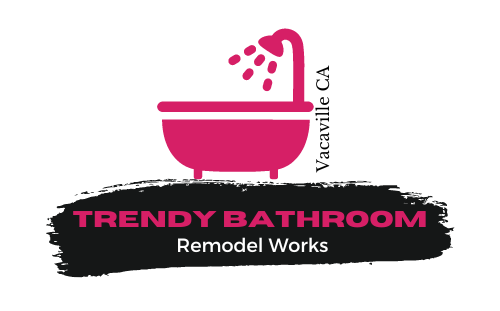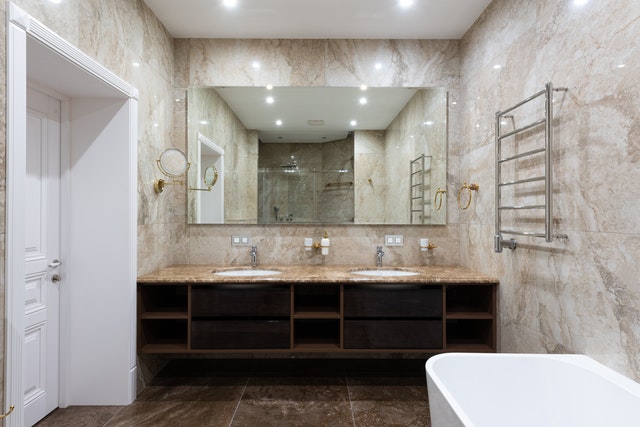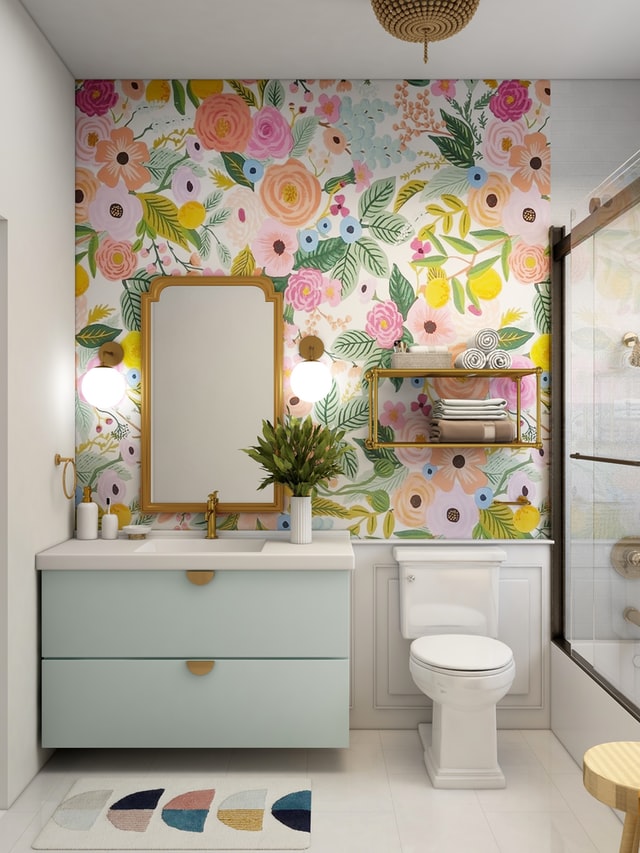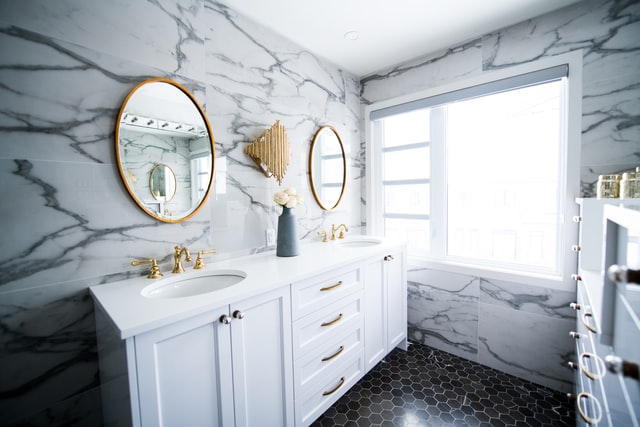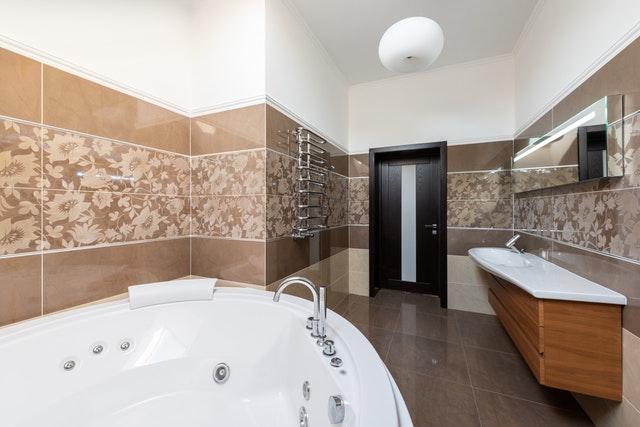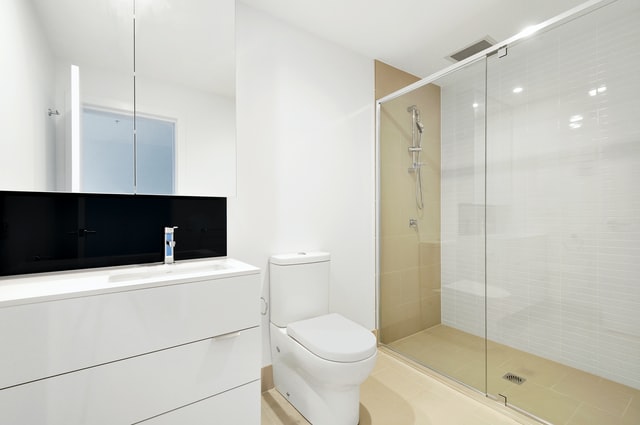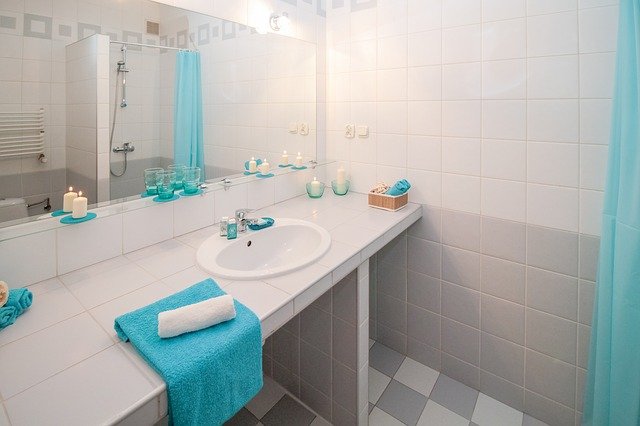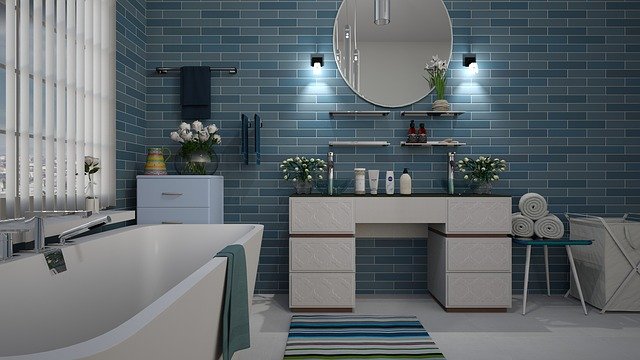Bathroom Storage
Bathroom Storage
This is an excerpt from the Book called “New Bathroom Idea Book” by Jamie Gold. Continue reading to learn more about Bathroom Storage, thanks to the author.
Storage
There never seems to be enough space for everything you want to keep in the bathroom, especially a shared one. Each occupant has his or her own grooming tools, soaps, shampoos, styling products, vitamins, and medicines. When you decide to add or remodel a bathroom, it’s best to take stock of what really needs to be stored there and what can move elsewhere in your home. If, for example, you purchase bulk toilet and facial tissue, pain relievers, and other cost-saving items, it’s best to keep just what you’ll need for one month in your bathroom. This will leave room for hair dryers, curling irons, electric toothbrushes and shavers, water flossers, and other essentials that you use daily.
The right bathroom vanity can accommodate much of your storage needs. Some of the newer cabinets on the market have built-in plugs for keeping electrical devices charged and ready to use. There are also clever storage accessories that hold essentials. Some re designed to wrap around the plumping, install on the backs of doors, or install behind false panels to make use of otherwise wasted space.
Bath storage can extend beyond vanities, as well. There are wall cabinets, tall cabinets, and floating shelves that can hold baskets or bins. These will all require installation, but can greatly increase your storage capacity.
There are also freestanding furniture pieces like etagere shelving units, carts, and storage ottomans that increase capacity without requiring installation. You just need to have the floor space to accommodate them.
Construction
Most bathroom cabinets today are made from composite wood products, including plywood, though there are a few made from solid wood, glass panels, and other materials. Medicine cabinets may have plastic or metal boxes with mirrored doors.
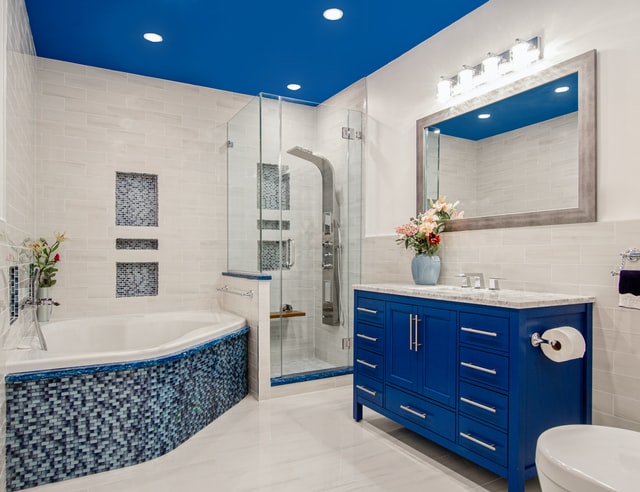
Standard bathroom cabinets are framed or frameless. The latter gives better access to the interior and is becoming increasingly common. Many bath cabinets have soft-close doors and drawers to prevent slamming. Full-extension drawer glides are also a popular, widely available feature that let you see and access your items more easily. Drawers are most commonly constructed of wood with either dovetailed or stapled corners. Dovetailed joinery generally lasts longer. Some drawer boxes- especially in upscale contemporary cabinets-are made of metal.
Cabinets are generally divided into three groups: stock, semicustom, and fully custom. Stock cabinets come in the most popular sizes and are available for fast delivery or immediate pickup. In general, they cannot be modified and cost the least.
Some stock cabinets are meant to be assembled at home. If you’re having them professionally installed, their assembly will add to the labor cost, eliminating part of your savings. If they’re being assembled by a nonprofessional, the integrity of the cabinet’s construction could be compromised by a lower skill level.
Semicustom cabinets allow for some modifications by a manufacturer, typically depth, interior accessories, upgraded finishes, and decorative details like toekick valances. They may take up to two months to receive and will cost more than stock.
Fully-custom cabinets may be made in a factory or a local cabinet shop. Every detail from size to number of drawers to finish and decoration is made to order from either source. Manufacturing times and costs will vary greatly, but custom generally costs more and takes longer than stock or semicustom.
Vanities
The most basic vanity has a door section to contain the plumbing and is topped with a countertop and sink. (Some home centers sell sets that combine all three). Many users want drawers to hold their essentials, and wider vanities will include at least one. Having two or three stacked drawers next to the door area is a common configuration for a smaller bath.
More elaborate vanities may have two separate door sections for double sinks and a three-drawer bank between them. Sizes can range from 24 inches wide for a very compact single model to 78 inches or wider for a double.
It’s more common, though, to combine separate cabinets that are easier to get into a bathroom than to use one cabinet to create a larger double vanity area. This modular approach costs more but is easier to maneuver into place and provides more flexibility for drawer count and placement.
Cabinetry Hardware
Any cabinets with doors and drawers are going to have hinges and glides. Soft-close hinges and drawer glides that were once available only on semicustom or custom cabinets are now increasingly available on more affordable stock vanities. So are adjustable hinges that make a door easier to align at installation and over time by the homeowner. Vanity drawers don’t typically need to hold the same weight as a kitchen drawer full of silverware, so heavy-duty glides are not required. You are still going to want smooth motion and full extension for maximum convenience.
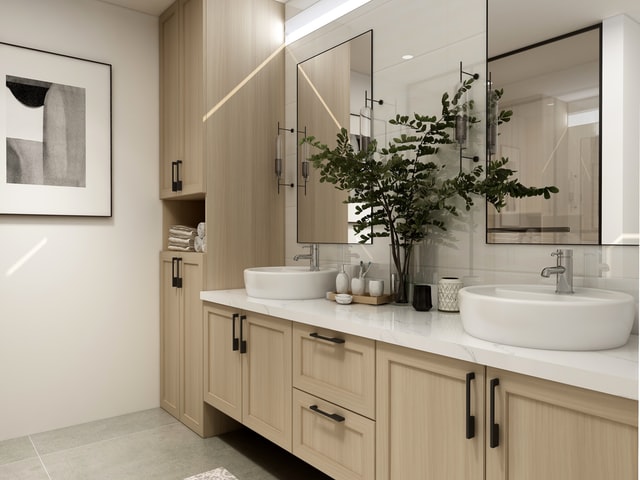
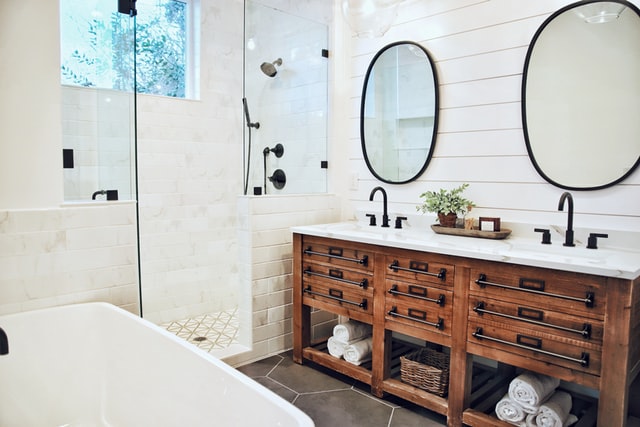
In addition to this functional hardware, your cabinetry might have decorative hardware. These can be knobs, pulls, or both to open doors and drawers. Pulls are typically easier for someone with wet or weaker hands to use, and are considered more aging-in-place friendly. Decorative hardware is like jewelry for your bathroom and should be chosen to complement the other design elements in the room, like your faucets and towel bars.
Contemporary cabinets might have integral pills that blend with the door and drawer fronts. They might have no decorative hardware at all, but use hidden push latches or electronically driven openers. These are harder on the finish, though, any may create more wear and tear on the cabinet fronts in the long run. They will also create more fingerprints on gloss finishes.
Medicine Cabinets
Medicine cabinets have been a standard feature in bathrooms going back several decades. They provide easy access to prescriptions and over-the-counter drugs as their name implies, but many occupants also use them for holding daily hygiene items. They provide a mirror on the outside of the door for grooming. Some higher-end models provide a second mirror on the back of the door, while other wider models provide triple mirrors for better side views.
Medicine cabinets may be recessed into a wall, surface-mounted against it, or partially recessed, with most of the depth in the wall cavity and a decorative frame or molding extending into the room. Some models offer a choice of surface or recessed mounting, and many have reversible hinges to accommodate mounting on a left or right side wall. There are also a few surface-mounted corner models on the market. The most widely available medicine cabinets are designed to fit between standard studs and are easy to replace later.
Additional Bath Storage
There are many storage options for your bathroom beyond vanities and medicine cabinets. Shallow wall cabinets can be installed above the toilet to hold extra rolls of toilet tissue and other items. Tall shallow cabinets that hold smaller items can be recessed into unused wall space. Decorative items can be housed in open-front, recessed inches custom built for their display.
Tall linen cabinets can hold sheets and towels if you have the room. Roll-out trays improve accessibility in these spaces. If you lack floor or wall space for a traditional linen tower, you can store towels on floating shelves, in baskets, or in open wine-style storage on an available wall. Storage furniture is another option if you don’t want to install more cabinets.
